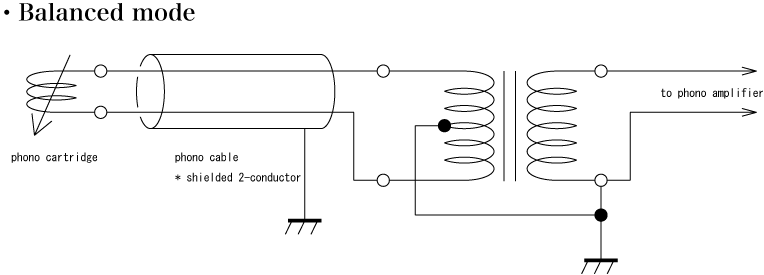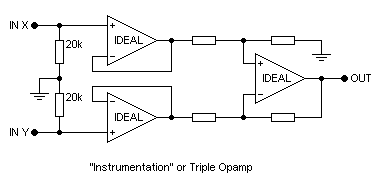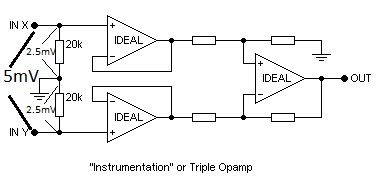I have been wondering how XLRs in a phono cable and into a phono stage with XLR input works. (XLR plug to a Din end connector). My simple mind tells me the phono cartridge has 2 pins for tonearm wires per channel. The XLR plug has 3 pins/wires. Where is the 3rd pin/wire connected to the cartridge which has only 2 pins per channel? I understand XRL cables are 3 pins to 3 pins from input to output and vice versa.
Phono Stage and XLRs
- Thread starter jadis
- Start date
You are using an out of date browser. It may not display this or other websites correctly.
You should upgrade or use an alternative browser.
You should upgrade or use an alternative browser.
All cartridges are balanced. Therefore, one should use a balanced phono stage to benefit from the extra 60dB of common node noise rejection.
The positive output of the cartridge goes to pin 2 of the XLR, the negative output to pin 3. Pin 1 is ground, which can be used to ground the shield of the cable if there is one, as well as the ground of the tonearm, even though there is usually a separate ground lead from the tonearm.
The positive output of the cartridge goes to pin 2 of the XLR, the negative output to pin 3. Pin 1 is ground, which can be used to ground the shield of the cable if there is one, as well as the ground of the tonearm, even though there is usually a separate ground lead from the tonearm.
Thanks for the info, Adrian.All cartridges are balanced. Therefore, one should use a balanced phono stage to benefit from the extra 60dB of common node noise rejection.
The positive output of the cartridge goes to pin 2 of the XLR, the negative output to pin 3. Pin 1 is ground, which can be used to ground the shield of the cable if there is one, as well as the ground of the tonearm, even though there is usually a separate ground lead from the tonearm.
Cartridges are not balanced, they are floating. A balanced connection requires 3 wires, not 2, hence XLR connectors.
In order to be balanced, both output polarities (+ and -) need to have the same impedance to common mode ground (this happens in phonostage). Connecting pins 1 and 3 together destroys common mode noise rejection. Pin 1 does act as a nice shield if only connected on the RX end, but you still do not have balanced drive. If impedances are not matched and you do not get CM rejection.
There are two ways to make a balanced phono connection:
1) Use a pair of 23.5k resistors to ground for each cartridge terminal. Thus, you get balanced drive and a 47k differential loading.
2) Use a step-up transformer with center tap on input. Connect center tap to ground. Bingo!
jh
In order to be balanced, both output polarities (+ and -) need to have the same impedance to common mode ground (this happens in phonostage). Connecting pins 1 and 3 together destroys common mode noise rejection. Pin 1 does act as a nice shield if only connected on the RX end, but you still do not have balanced drive. If impedances are not matched and you do not get CM rejection.
There are two ways to make a balanced phono connection:
1) Use a pair of 23.5k resistors to ground for each cartridge terminal. Thus, you get balanced drive and a 47k differential loading.
2) Use a step-up transformer with center tap on input. Connect center tap to ground. Bingo!
jh
Thanks for your explanation, Jim.Cartridges are not balanced, they are floating. A balanced connection requires 3 wires, not 2, hence XLR connectors.
In order to be balanced, both output polarities (+ and -) need to have the same impedance to common mode ground (this happens in phonostage). Connecting pins 1 and 3 together destroys common mode noise rejection. Pin 1 does act as a nice shield if only connected on the RX end, but you still do not have balanced drive. If impedances are not matched and you do not get CM rejection.
There are two ways to make a balanced phono connection:
1) Use a pair of 23.5k resistors to ground for each cartridge terminal. Thus, you get balanced drive and a 47k differential loading.
2) Use a step-up transformer with center tap on input. Connect center tap to ground. Bingo!
jh
Resistors are not needed, the input resistances of the balanced amplifier perform their role. And they also divide the signal by 2 times, and also worsen the signal-to-noise ratio by 6 dB.1) Use a pair of 23.5k resistors to ground for each cartridge terminal. Thus, you get balanced drive and a 47k differential loading.
Resistors are not needed, the input resistances of the balanced amplifier perform their role. And they also divide the signal by 2 times, and also worsen the signal-to-noise ratio by 6 dB.
Well yes, the 47k loading is provided by the balanced amplifier input. It does not however, cut signal amplitude in half. Cartridge sees only the 47k. If balanced with 23.5k each leg to ground, you have both + and - polarities, which are -6dB with respect to ground, but the circuit amplifies both of them. No loss of signal, no change in SNR.
It doesn't matter if it's 47k or 23.5k. Two resistors are a signal divider from the cartridge. From 5mV, for example, they make 2.5mV on each of the balanced inputs, 2x2.5=5. That is, the signal is 6 dB lower, and the noise level is the same.Well yes, the 47k loading is provided by the balanced amplifier input. It does not however, cut signal amplitude in half. Cartridge sees only the 47k. If balanced with 23.5k each leg to ground, you have both + and - polarities, which are -6dB with respect to ground, but the circuit amplifies both of them. No loss of signal, no change in SNR.
We went through the subject in the past - please see https://www.whatsbestforum.com/threads/balanced-tonearm-cable.32864/
Here each method is examined from a technical and measurement point of view. unbalanced, balanced, differential signals. all advantages and disadvantages.
 sound-au.com
Figure 14 - Transformer Output Driving Unbalanced Input is probably interesting for many people here
sound-au.com
Figure 14 - Transformer Output Driving Unbalanced Input is probably interesting for many people here
Balanced Interfaces
ESP - Balanced Interfaces - how they work, what goes wrong, and why
Yes Yes Yes. What do you call losses? In the case of balance, 2 times smaller signal enters each amplifier. The output signal is the same, but it has noise from 2 input amplifiers, not from one as in unbalanced mode. From 6 dB of deterioration there is nowhere to go.No no no. When doing it like this there is no signal loss. Noise level is same (ignoring any improvements via removal of hum).
View attachment 117652
Attachments
I don’t agree. Since the cartridge is already balanced, there is no need for XLR cables. You are introducing additional transformers into the signal chain if you use XLR, which is why most high end phono stages don’t have an XLR input (eg, Nagra, DarTZeel).All cartridges are balanced. Therefore, one should use a balanced phono stage to benefit from the extra 60dB of common node noise rejection.
The positive output of the cartridge goes to pin 2 of the XLR, the negative output to pin 3. Pin 1 is ground, which can be used to ground the shield of the cable if there is one, as well as the ground of the tonearm, even though there is usually a separate ground lead from the tonearm.
There are always advantages to using XLR cabling, no matter how the signal is further processed in the phonoamp. Because with RCA cabling the shielding is also signal ground at the same time, interference from outside is brought into the highly amplified stage of the phono amp. With XLR balanced the shield from the cable is only earth if done correctly no contact to signal ground.I don’t agree. Since the cartridge is already balanced, there is no need for XLR cables. You are introducing additional transformers into the signal chain if you use XLR, which is why most high end phono stages don’t have an XLR input (eg, Nagra, DarTZeel).
On the subject of input transformers, it is always good to add an amplifying element that does not add any active noise*. You can choose a lower gain in the phono preamplifier, which reduces noise again. Whether you like the sound of it is another matter. mostly depends on taste and the quality of the transformer. From a technical point of view it makes sense.
*low measurable current noise
No, only for long runs are balanced connections beneficial.There are always advantages to using XLR cabling, no matter how the signal is further processed in the phonoamp. Because with RCA cabling the shielding is also signal ground at the same time, interference from outside is brought into the highly amplified stage of the phono amp. With XLR balanced the shield from the cable is only earth if done correctly no contact to signal ground.
On the subject of input transformers, it is always good to add an amplifying element that does not add any active noise*. You can choose a lower gain in the phono preamplifier, which reduces noise again. Whether you like the sound of it is another matter. mostly depends on taste and the quality of the transformer. From a technical point of view it makes sense.
*low measurable current noise
Higher transformer inductance from a balanced connection will deteriorate the sound quality. This is why Nagra, and others, do not even include the option of an XLR input. These are cost no object designs, if there was a sonic benefit- the option would have been included.
I don’t agree. Since the cartridge is already balanced, there is no need for XLR cables. You are introducing additional transformers into the signal chain if you use XLR, which is why most high end phono stages don’t have an XLR input (eg, Nagra, DarTZeel).
That is not correct.
CH Precision, the so called best phono ever, the 80K P10 phono have XLR inputs.
As do EMT, Burmester , D'Agostino, Phasemation, Vitus, Accuphase, Aesthetix, Esoteric to name a few.
Last edited:
The XLR inputs are there for convenience, not for sound quality.That is not correct.
CH Precision, the so called best phono ever, the 80K P10 phono have XLR inputs.
As do EMT, Burmester , D'Agostino, Phasemation, Vitus, Accuphase, Aesthetix, Esoteric to name a few.
The XLR inputs are there for convenience, not for sound quality.
LOL. since when is XLR inputs for a phono stage a convenience. The overwhelming phono cables that people use are RCA.
I stated why above.LOL. since when is XLR inputs for a phono stage a convenience. The overwhelming phono cables that people use are RCA.
Exactly my point!
I would seriously doubt the competency of any tonearm manufacturer who provides XLR outputs from the arm.
Last edited:
Similar threads
- Replies
- 57
- Views
- 9K
- Replies
- 6
- Views
- 2K
| Steve Williams Site Founder | Site Owner | Administrator | Ron Resnick Site Owner | Administrator | Julian (The Fixer) Website Build | Marketing Managersing |










